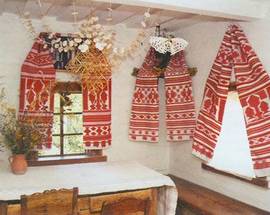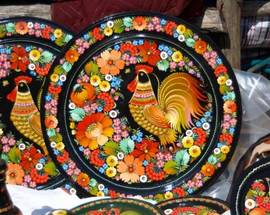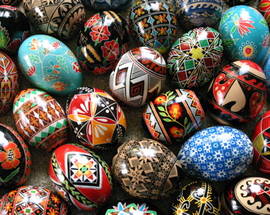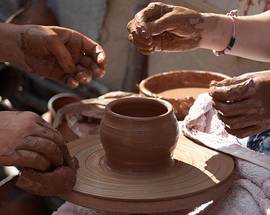Ukrainian Crafts
more than a year agoEmbroidery takes a significant place among the diversity of Ukrainian folk art. People have always wanted to decorate the objects that surrounded them, so that their lives also become embellished. If we consider the designs of embroidery, its harmony of colour compounds and rhythm of pattern – it reflect human feelings. Therefore, the embroidery can be happy, funny and also sad, pensive. Ukrainian embroidery is very diverse. Each district and even village has its own favorite colors, their local patterns, their technique of implementation. Variety of embroidery, its artistic perfection for the most part depends on the technique. There are more than a hundred different techniques. 10 - 15 different techniques can be combined in one product. Modern Ukrainian embroidery cherishes folk traditions.
The tradition of making pysanky, i. e. writing Eggs, rooted Long time ago when man was indivisible from nature. Then there were characters like letters of the magic language. Picturing them on the walls of caves, crockery and clothes, people turned to sun, wind, water, earth. Over time they began to write messages on avian egg. Why egg? Probably because ancient people impressed with the appearance of inanimate object a new life. Easter eggs have one colour and are the oldest ones. Later there were many-colored Easter eggs, which are applied in a variety of natural dyes. But color pysanky appeared not only for beauty, but also got its symbolic meaning, the origin of which is not accidental.
Decorative painting have entered the culture of Ukrainian people with a vivid variety of colors. Petrikov painting - decorative and ornamental painting, formed in Dnipropetrovsk in the late XIX-XX centuries. The name comes from the village Petrikovka. Petrikov ornament has its roots in the ancient traditional ornamentation, which is widely used in the home of the Cossacks, who adorned their housing, utensils and weapons. For modern Petrikov painting floral design is typical. It is based on careful study of real forms of local flora. Petrikov ornamentalist have incredibly accurate eye and well coordinated hand movements - all masters paint without making drafts, without using any measuring instrument. The work is conducted using a thin brush. In addition to brushes, Petrikov masters use the flower stalk, wood chips, berries and even actual flowers.
Secrets of pottery were passed from generation to generation. Every family member was involved in the process of manufacturing products. Men performed the most complex and responsible operations - worked at the potter's wheel, baked goods. Women and children kneaded the clay, painted pots and dishes, shaped toys. Then wares were baked in the crucible - special furnaces. Then, finished goods were loaded on carts, wraped in straw, so it wouldn't break, and transported to the fair. At the end of XIX century factory made utensils from metal, porcelain, glass begin to displace the pottery ware. But the traditional pottery art were preserved in Oposhnya and Kosovo (Ivano-Frankivsk region). Until the collapse of the Soviet Union products of local craftsmen traveled all over the world. The greatest museums of the country also had in their expositions Oposhnya ceramics.
Source: Ukrainian Craft Tours.








Comments